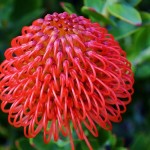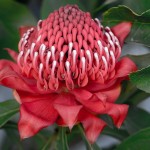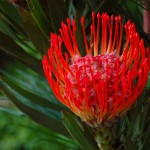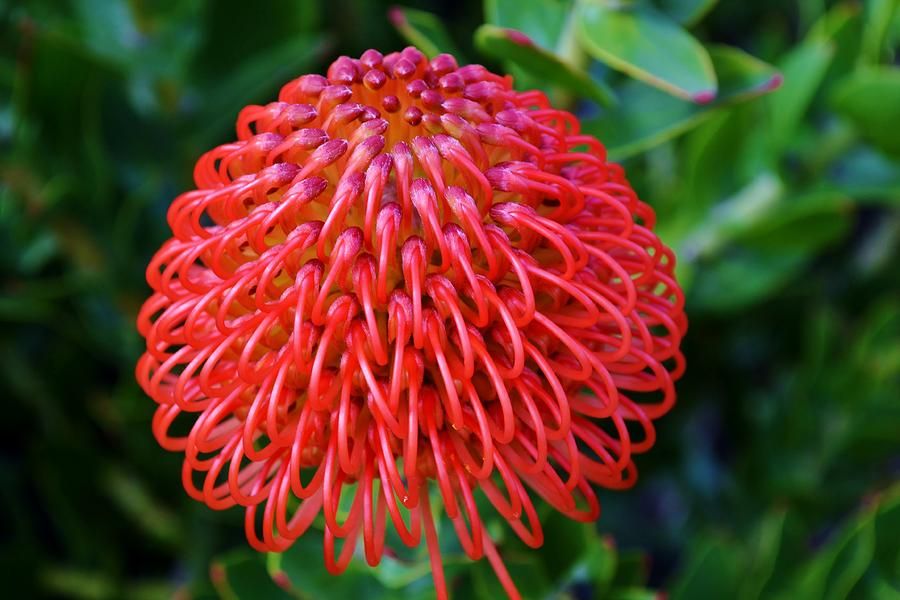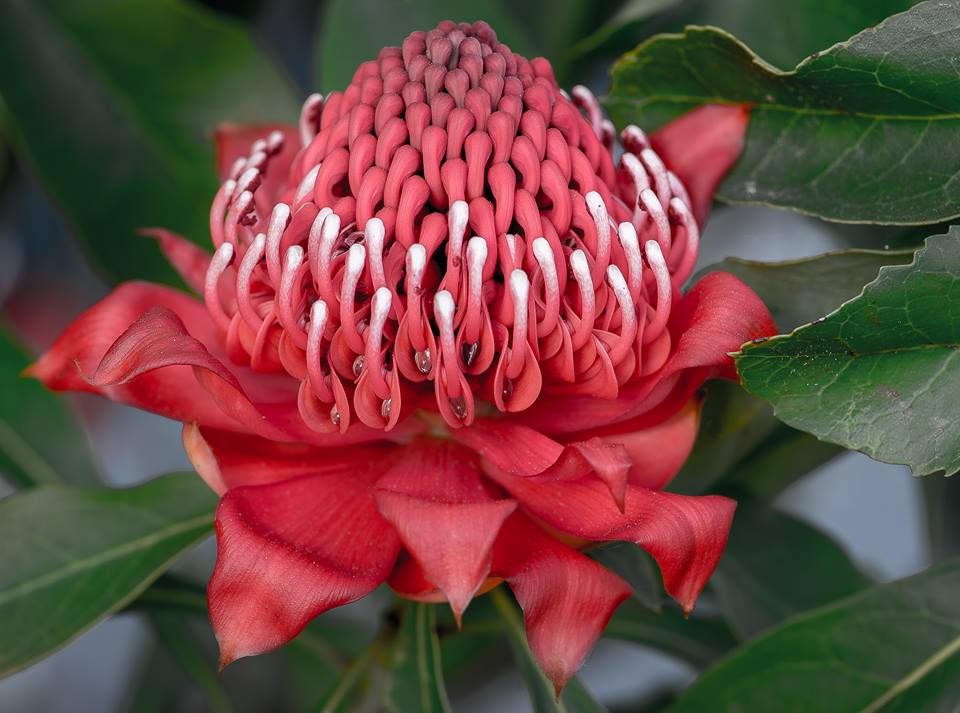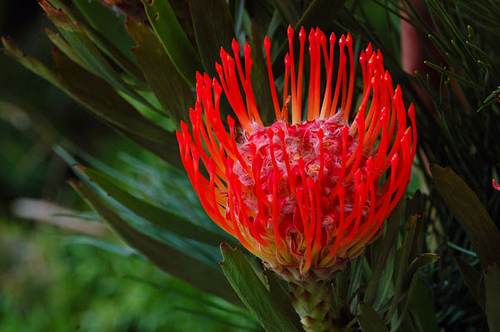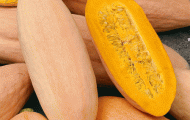Rubiaceae (Coffee family)
The roots of this plant are used in Nigeria to treat high blood pressure
Description. Small evergreen tree or large shrub, 8-12 m (26-39 ft) tall, with a broad crown and gray trunk. Opposite, simple, oval leaves 12 to 17 cm (5-7 in) long by 10-12 cm (4-5 in) wide with prominent light green veins. White, fragrant flowers form spherical inflorescences measuring 3 to 4 cm (1.2-1.6 in) in diameter. Reddish-brown to pink, syncarp fruits are round, oval, or of irregular shape and measure 4-6 cm (1.62.4 in) in diameter. The rugose surface of the fruit is covered with small protuberances. Flesh firm, reddish-pink with soft fibers radiating from the center.
Benefits Of: AFRICAN PEACH PINCUSHION TREE Photo Gallery
Origin and Distribution. The tree grows wild in rainforests and seasonally dry savanna woodlands of tropical West and Central Africa. It is ultratropical, requiring constant high temperatures and growing only in the inner tropics below 200 m (660 ft) altitude. The tree is sometimes cultivated in tropical Africa as a dooryard plant. More often the fruits are collected from wild trees.
Food uses. Ripe fruits, which have firm flesh and a sweet fruity taste compared by some to strawberries, are eaten fresh or made into juice. Overripe fruits are dried and made into flour for later use.
Comments. The African peach has a long and important history in folk medicine. Decoctions of leaves and bark are used by traditional healers to treat fever, diabetes, diarrhea, malaria, and internal parasites. The roots are used in Nigeria to treat high blood pressure.
The termite-resistant wood is used in construction and for fence posts. It is prized as a firewood and for making charcoal. Two related species, yellow cheesewood (N. orientalis) from Southeast Asia, New Guinea, and northern Australia, and N. diderrichii, a forest tree from Central Africa, are grown for their edible leaves and fruits and for their medicinal properties, which are similar to those mentioned for N. latifolia.
Description. Evergreen or deciduous tree with gray bark, 20-30 m (66-100 ft) tall. Opposite, ovate, glossy green leaves 20-32 cm (8-13 in) long by 8-20 cm (3-8 in) wide with distinctive yellow-green veins. Small, tubular, yellow-orange flowers are densely grouped in spherical flower heads. Flowers are frequently partly fused together forming a long corolla tube tipped with the individual lobes of the petals. Syncarp fruits are round or often irregularly formed, pale yellow, rugose, with several ovoid seeds. Origin and Distribution. Native to Southeast Asia from Thailand, Myanmar, and the Philippines south to New Guinea and northern Australia. The tree grows naturally in rainforests and in seasonally dry forests, often close to rivers. Occasionally grown as an ornamental tree.
Food uses. The slightly bitter-tasting fruits are eaten out of hand. At one time the fruits were an important bush food for the Aborigines of northern Australia.
Comments. A yellow or orange dye is produced from the bark and wood of the tree. The soft, nondurable, yellowish wood is used in construction. Bark extracts are used in traditional medicine to treat stomach problems and to induce vomiting. Trunks were used by indigenous peoples of Malesia to make canoes.
Description. Medium-sized evergreen tree with a spreading crown. Leaves are alternate, pinnately compound with 2-4 pairs of leaflets (elliptic to obo-vate, 10-25 cm [4-10 in] long, dull dark green). Small apetalous flowers are produced in loose terminal panicles. Trees produce either male flowers, female flowers, or hermaphroditic flowers that are female with a small percentage of male flowers. Fruits are round or ellipsoid drupes with a leathery skin densely covered in hairlike, soft spines up to 2 cm (0.8 in) long. Fruit colors range from dark red (on an orange-yellow background) to yellow. The translucent or whitish, subacid to sweet pulp contains a single light brown seed.
Origin and Distribution. The rambutan is at home in the rainforests of western Malaysia and Singapore. It is cultivated mostly in Southeast Asia but gaining popularity in other tropical countries, especially in Central America. The tree needs a humid tropical climate with evenly distributed rainfalls or a monsoon climate.
Food uses. Fruits are commonly eaten out of hand. They are sold fresh or canned. Rambutans are used for fruit salads and in the preparation of jams and jellies or preserves but are also used as an ingredient in savory dishes, especially in Southeast Asia. The seeds are sometimes roasted and eaten as a snack in the Philippines.
Comments. The common name is derived from the Malaysian word rambut, which means “hairy.” The seeds contain up to 40% fat, which is extracted and used in making soap and for industrial purposes. Rambutan flowers are an excellent source of pollen for honey bees. Many cultivars of rambutan exist: red, orange, or yellow fruits, and freestone and clingstone varieties are available. Rambutan fruits are usually sold still attached to the branch. This helps prevent damage and rot.
Description. Evergreen tree with short trunk and rounded crown, 10-15 m (33-50 ft) tall. Pinnate or odd-pinnate, alternate leaves with 2-5 pairs of oblong or elliptic leaflets 6-18 cm (2.4-7 in) long by 3-5 cm (1.2-2 in) wide. Tiny greenish flowers are produced in erect panicles. Fruits ovoid, 5-8 cm (2-3 in) long, dark red to red or less often yellow, with a thick, leathery exocarp covered in blunt tubercles or short, fleshy, soft spines less than 1 cm (0.4 in) long. Sweet and juicy pulp white to yellowish-white, translucent, with a single light brown seed. Origin and Distribution. Native to western Malaysia and Singapore. It is fairly common in Southeast Asia but uncommon to very rare elswhere in the tropics. In the Americas, the pulasan is common only in Costa Rica, where it is planted commercially and the fruits sold in markets. The tree requires a strictly tropical climate with high humidity.
Food uses. The fruits are usually eaten fresh or made into jam. The raw seed is also edible and said to taste similar to almonds. The boiled or roasted seeds are made into a beverage similar to cacao.
Comments. The pulasan is cosely related to the ram-butan (N. lappaceum), but has sweeter fruits and the flesh is more easily detached from the seed. The common name pulasan is derived from the Malay word pulas, which means “twist,” referring to the way ripe fruits are opened to get to the sweet aril inside. The fruits are a good source of carbohydrates, vitamin C, and calcium.
Description. Perennial aquatic plant growing to 1.5 m (5 ft) in length, with reddish-purple roots emerging from joints. Also found creeping on riverbanks. Whitish inflated stems with spongy tissue act as a floating device. Alternate, bipinnate, mimosa-like leaves 3-8 cm (1.2-3 in) long with 1640 elliptic leaflets. Small yellow flowers in axillary, erect, orbicular inflorescences. Flowers with 5 petals and numerous yellow stamens. Fruits are flat pods 3-5 cm (1.2-2 in) long.
Origin and Distribution. Though its exact origin is unknown, water mimosa is thought to be native to Central America and northern South America. Today the plant grows in lakes, rivers, and waterways throughout the tropics. It has become an invasive species in many regions such as northeastern Australia and is therefore considered a pest. Cultivated in Thailand and Cambodia as a vegetable.
Food uses. Young leaves, shoots, and immature fruits all have a cabbagelike flavor and are eaten as a vegetable, especially in Thai and Cambodian cuisine. They are eaten raw, boiled, or fried and commonly used in the preparation of stir-fries.
Comments. The plant is cultivated in flooded fields in Southeast Asia. The plants, which have a very short shelf life, are a common sight in markets in Thailand.
Maybe You Like Them Too
- 5 Korean Hair Care Products To Try
- How to Remove Black Hair Dye and Restore Your Color
- Refusing To Camouflage Gray Hair At Work Reddit
- How To Stop Shampooing And Washing Hair Every Day
- How To Get Rid Of Oily Hair

